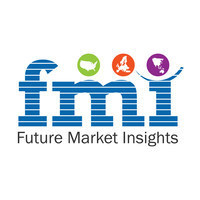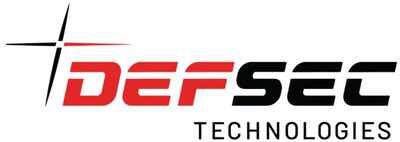Anti-aircraft Warfare Market is Expected to Grow at an Average CAGR of 7.4% During Forecast Period by 2034 | Future Market Insights Inc.
The Anti-aircraft Warfare Industry is expected to witness a growing trend of integrating artificial intelligence into its systems. AI can enhance real-time threat detection, improve target tracking accuracy, and enable autonomous decision-making capabilities. This integration aims to make anti-aircraft systems more adaptive and responsive to evolving aerial threats.
NEWARK, Del., July 16, 2024 /PRNewswire/ — The anti-aircraft warfare market is expected to reach US$ 46.1 billion by 2034, with a projected CAGR of 7.4% between 2024 and 2034. The market is anticipated to be worth US$ 22.7 billion in 2024. The industry is advancing through integrating advanced technology, such as radar systems and artificial intelligence, to enhance real-time threat identification and interception. Research and development efforts are focused on improving the accuracy and range of anti-aircraft weapons, with cooperation between international initiatives and defense funding driving the global development of effective anti-aircraft warfare capabilities.

Increasing instability and geopolitical conflicts in the area are pushing countries to improve their anti-aircraft warfare capabilities. When tensions rise, protecting airspace becomes critical, which fuels the growth of the anti-aircraft warfare industry.
The need for anti-aircraft warfare is growing globally due to the integration of state-of-the-art technology, such as artificial intelligence, machine learning, and powerful radar systems. These developments increase accuracy and efficacy, demonstrating a growing need for defensive systems with advanced technology.
The dynamic terrain of aerial combat, typified by the appearance of lethal, intelligent, and self-governing dangers, demands a heightened emphasis on enhancing air defense capacities globally to safeguard regions from potential attackers. The development and implementation of sophisticated missile defense systems with electronic warfare capabilities and adaptive countermeasures aid in detecting and neutralizing diverse aerial threats. This improves the anti-aircraft defense systems’ overall robustness and efficacy.
Request a Report Sample to Gain Comprehensive Insights: https://www.futuremarketinsights.com/reports/sample/rep-gb-18914
Anti-aircraft warfare encompasses a spectrum of methods and tactics for guarding against hostile aircraft or missiles in the air and space domains. Active defense employs ground- and air-based weaponry to eliminate or neutralize malicious threats, while passive defense relies on concealment and dispersion strategies to mitigate the impact of aerial attacks.
Key Takeaways from the Anti-Aircraft Warfare Market
- The United States anti-aircraft warfare market is projected to experience a CAGR of 7.6% through 2034.
- Demand for anti-aircraft warfare in Japan is expected to demonstrate a rapid CAGR of 9.0% through 2034.
- The United Kingdom anti-aircraft warfare industry is anticipated to see a CAGR of 8.6% through 2034.
- The market size of anti-aircraft warfare in South Korea showcases an impressive CAGR of 8.9% through 2034.
- China anti-aircraft warfare market is expected to display a moderate CAGR of 7.9% through 2034.
“Developing anti-aircraft warfare capability is a response to geopolitical crises in several regions. Modern technologies like radar systems and artificial intelligence enhance the precision and efficacy of defense systems. The changing face of aerial conflict highlights the necessity for international air defense capabilities. Anti-aircraft defense is strengthened by advanced missile defense systems equipped with adaptive countermeasures and electronic warfare capabilities.” says a Nikhil Kaitwade (Associate Vice President at Future Market Insights, Inc.)
Competitive Landscape
The anti-aircraft warfare industry is experiencing significant growth due to the innovative efforts of key players such as Lockheed Martin Corporation and Raytheon Technologies. These companies are investing heavily in research and development to improve the technological capabilities of anti-aircraft systems, focusing on advanced radar technologies, precision-guided missiles, and electronic warfare solutions. Strategic collaborations between industry players and defense agencies foster international cooperation, leading to the development of sophisticated and interoperable anti-aircraft systems.
Key market players like MBDA and Northrop Grumman Corporation are expanding their global presence by exploring export opportunities and providing advanced anti-aircraft systems to allied nations. They also integrate artificial intelligence and autonomous systems for quicker threat detection, decision-making, and response. Additionally, domestic production capabilities are prioritized to reduce dependence on overseas suppliers and foster self-sufficiency in anti-aircraft defense.
Recent Developments
- The United States Navy granted L3 Technologies and Raytheon additional CEC assistance outside the United States in December 2023. Overseas partners in Australia, Canada, and Japan also completed this project.
- The Chinese People’s Liberation Army (PLA) received a shipment of new self-propelled anti-aircraft systems in April 2023, which defense specialists said were intended to fight drone threats.
Key Companies in the Anti-Aircraft Warfare Market
- Lockheed Martin Corporation
- Raytheon Technologies
- Northrop Grumman Corporation
- BAE Systems plc
- Thales Group
- MBDA
- Israel Aerospace Industries Ltd.
- Kongsberg Gruppen ASA
- Leonardo S.P.A.
- Rafael Advanced Defense Systems Ltd.
- Rheinmetall AG
- Key Segments
- By Capability:
- Support
- Protection
- Attack
Get in Touch with Our Sales Team to Secure Your Copy of the Report Now: https://www.futuremarketinsights.com/checkout/18914
By System:
- Weapon Systems
- Anti-Aircraft Gun
- Anti-Aircraft Missile
- Others
- Radar System
- Electronic Warfare System
- Command and Control System
By Platform:
- Airborne
- Combat Aircraft
- Military Helicopters
- Unmanned Aerial Vehicles (UAVs)
- Land
- Military Vehicular
- Dismounted Soldier
- Fixed Stations
- Naval
- Naval Ships
- Unmanned Surface Vehicles (USVS)
By Range:
- Short Range (<20 Km)
- Medium Range (20 to 100 Km)
- Long Range (>100 Km)
By Region:
- North America
- Latin America
- Europe
- East Asia
- South Asia
- Oceania
- The Middle East and Africa
Authored By
Nikhil Kaitwade (Associate Vice President at Future Market Insights, Inc.) has over a decade of experience in market research and business consulting. He has successfully delivered 1500+ client assignments, predominantly in Automotive, Chemicals, Industrial Equipment, Oil & Gas, and Service industries.
His core competency circles around developing research methodology, creating a unique analysis framework, statistical data models for pricing analysis, competition mapping, and market feasibility analysis. His expertise also extends wide and beyond analysis, advising clients on identifying growth potential in established and niche market segments, investment/divestment decisions, and market entry decision-making.
Nikhil holds an MBA degree in Marketing and IT and a Graduate in Mechanical Engineering. Nikhil has authored several publications and quoted in journals like EMS Now, EPR Magazine, and EE Times.
Have a Look at Related Research Reports of Automotive Domain
The global aircraft cabin interior market is expected to attain a valuation of US$ 20.7 billion in 2023 and is projected to reach US$ 37.6 billion by 2033, expected to register a CAGR of 6.1% during the forecast period.
Ongoing aircraft refurbishing market trends hold the potential for reaching a worth of US$ 8,694.18 million by 2034. According to the estimates, the market analysis indicates a 5.82% CAGR until 2034. In 2024, the aircraft refurbishing market size is valued at US$ 4,938.26 million.
The automotive sunroof market is anticipated to attain a size of USD 7,920.1 million in 2024. The sector is estimated to further grow at a CAGR of 11% during the forecast period. The market is estimated to reach a value of USD 22,780.9 million in 2034.
The automotive diagnostic scan tool market size is estimated to reach USD 39.7 billion by the end of 2024. The sector is anticipated to experience robust growth at a CAGR of 7% in the forecast period, thereby taking the size to USD 78.1 billion by 2034.
As per the analysis, sale of electric vehicle sensor holds a current valuation of US$ 10,725.11 million in 2024. Going by this pattern, demand could rise and equate to a market valuation of US$ 49,392.50 million, with a CAGR of 16.5% by 2034.
The global automotive performance part market size is projected to be worth US$ 5,80,711.00 million by 2034. According to the estimates, the market is anticipated to exhibit a 4.70% CAGR until 2034. In 2024, the automotive performance part market size is valued at US$ 3,66,854.20 million.
The automotive carbon ceramic brake market is expected to rise from a valuation of US$ 588.93 million in 2024 to US$ 1,568.26 million by 2034. From 2024 and 2034, sales of automotive carbon ceramic brakes are likely to advance at a CAGR of 10.29%.
The automotive camshaft market value is estimated to expand at a CAGR of 3.7% over the assessment period. In 2024, the market is expected to generate a revenue worth US$ 10,662.70 million. By 2034 end, the market size is forecasted to reach US$ 11,056.49 million.
The light electric vehicle market is expected to rise at a CAGR of 10.6% during the projected period. The market value is projected to increase from US$ 98.2 billion in 2024 to US$ 268.0 billion by 2034.
The global EV charger converter module market size reached US$ 4,054.3 million in 2023 and is expected to total US$ 5,019.0 million by 2024. Global sales of EV charger converter modules are anticipated to rise at a staggering 25.5% CAGR during the next ten years. By 2034, the total market valuation will likely reach US$ 48,605.2 million.
About Future Market Insights (FMI)
Future Market Insights, Inc. (ESOMAR certified, recipient of the Stevie Award, and a member of the Greater New York Chamber of Commerce) offers profound insights into the driving factors that are boosting demand in the market. FMI stands as the leading global provider of market intelligence, advisory services, consulting, and events for the Packaging, Food and Beverage, Consumer Technology, Healthcare, Industrial, and Chemicals markets. With a vast team of ~400 analysts worldwide, FMI provides global, regional, and local expertise on diverse domains and industry trends across more than 110 countries.
Contact Us:
Future Market Insights Inc.
Christiana Corporate, 200 Continental Drive,
Suite 401, Newark, Delaware – 19713, USA
T: +1-845-579-5705
For Sales Enquiries: [email protected]
Website: https://www.futuremarketinsights.com
LinkedIn| Twitter| Blogs | YouTube
Logo: https://mma.prnewswire.com/media/1197648/3531122/FMI_Logo.jpg
![]() View original content:https://www.prnewswire.com/news-releases/anti-aircraft-warfare-market-is-expected-to-grow-at-an-average-cagr-of-7-4-during-forecast-period-by-2034–future-market-insights-inc-302198226.html
View original content:https://www.prnewswire.com/news-releases/anti-aircraft-warfare-market-is-expected-to-grow-at-an-average-cagr-of-7-4-during-forecast-period-by-2034–future-market-insights-inc-302198226.html
SOURCE Future Market Insights



 Private Internet Access gives you unparalleled access to thousands
of next-gen servers in over 83 countries and each US state. Your
VPN experience will always be fast, smooth, and reliable.
Private Internet Access gives you unparalleled access to thousands
of next-gen servers in over 83 countries and each US state. Your
VPN experience will always be fast, smooth, and reliable.
